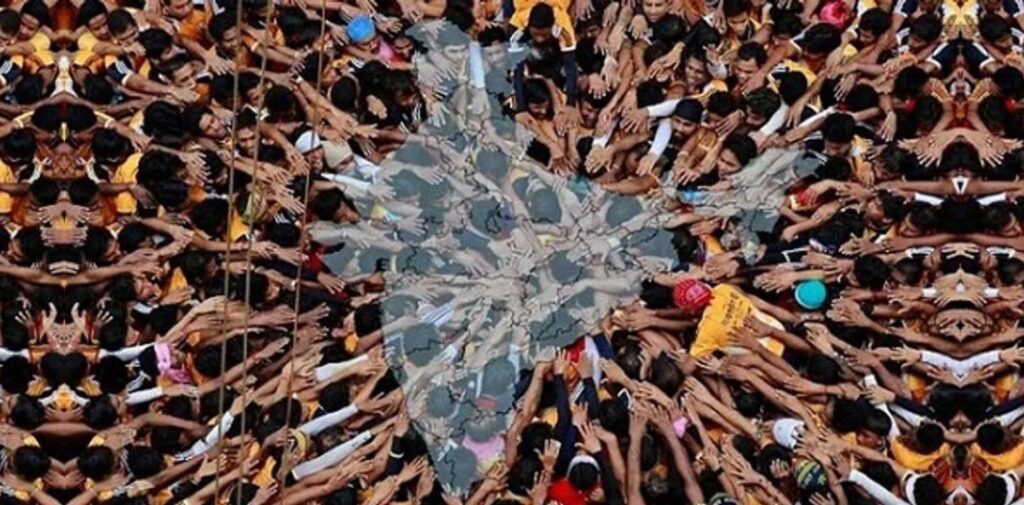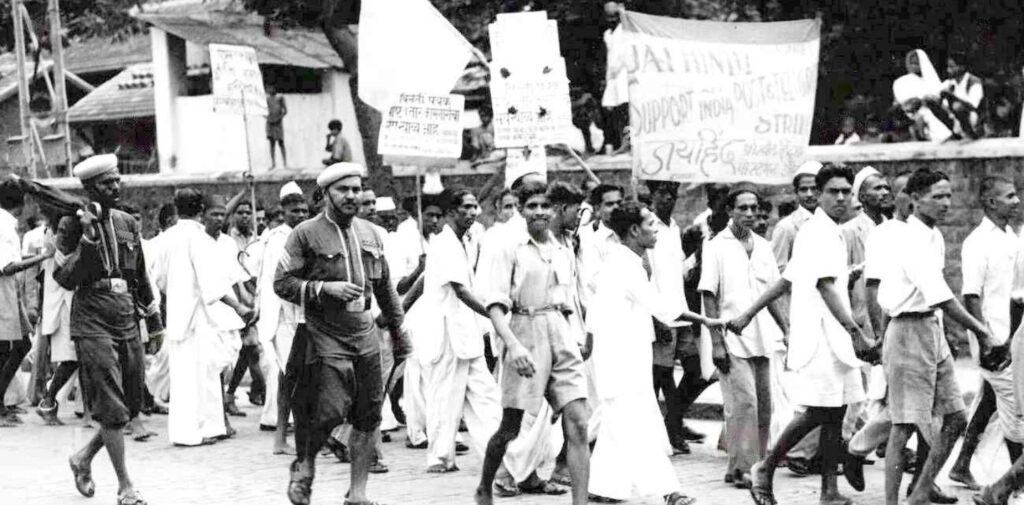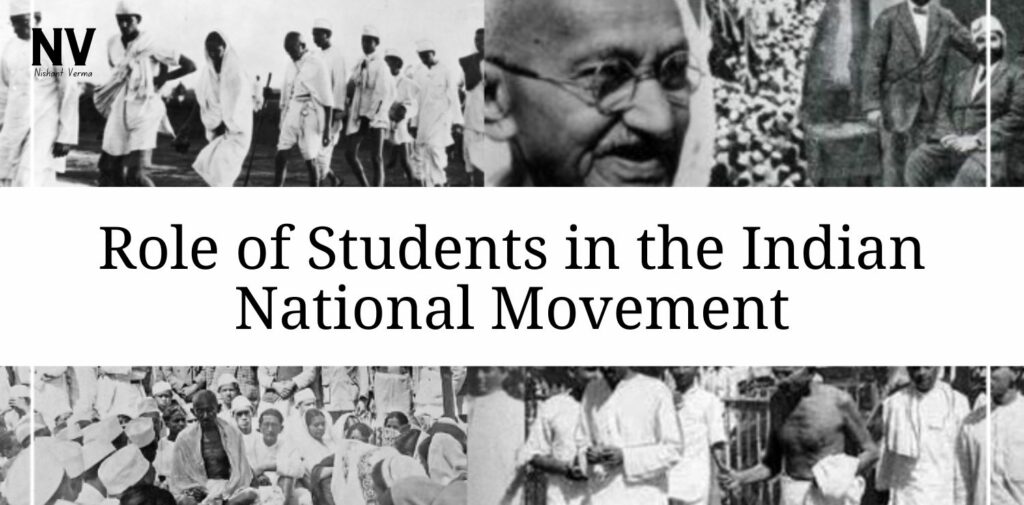The Indian National Movement was a long and difficult struggle for independence, fought against the British colonial rule. During this struggle, many sections of society came together to demand freedom. Among the most significant contributors to this movement were the students. They played a vital role in shaping the direction of the fight for independence. The students’ energy, enthusiasm, and determination were crucial in spreading national consciousness, organizing protests, and fighting for India’s freedom. In this article, we will explore the different ways in which students contributed to the Indian National Movement.
The Early Role of Students in the National Movement
In the early stages of the Indian National Movement, students were largely influenced by the ideas of social reformers and national leaders who were fighting for change. The rise of education in India in the 19th century played a major role in creating a sense of awareness among the youth. Schools and colleges started becoming centers of intellectual debates, where students were exposed to new ideas about independence, equality, and freedom.
Students like Bankim Chandra Chattopadhyay and Rabindranath Tagore, through their writings and teachings, inspired the youth to think critically about the British rule. The works of these great writers were discussed in the classrooms, leading to a growing sense of nationalism.

Students and the Freedom Struggle: Key Contributions
Students’ involvement in the Indian National Movement became more direct and impactful in the late 19th and early 20th centuries. The various struggles against British policies, such as the Partition of Bengal, the Salt March, and the Quit India Movement, saw students at the forefront. Here are some of the important ways in which students contributed:
1. Raising National Awareness
One of the primary roles students played in the national movement was raising awareness about the injustices of British colonial rule. Students were often the first to understand and question the oppressive policies of the British. They read books and newspapers that discussed India’s situation under colonial rule and became vocal in their demands for freedom. As young people with a sense of idealism, students took on the responsibility of educating others about the importance of self-rule and swaraj (self-governance).
In educational institutions, student leaders organized debates, discussions, and lectures that encouraged fellow students to join the movement. This growing awareness among students spread to the larger public, thus reaching every corner of India. Their passion and ability to communicate national issues made them important messengers of the nationalist cause.
2. Organizing Protests and Movements
Students were actively involved in organizing and participating in protests, strikes, and boycotts during the freedom struggle. They played a crucial role during events such as the Non-Cooperation Movement (1920-22) and the Civil Disobedience Movement (1930-34). Their participation in these protests was not limited to urban areas; students from colleges and schools across India took part in mass movements, demanding the end of British rule.
During the Non-Cooperation Movement, students boycotted British educational institutions, abandoned foreign goods, and even joined the protests on the streets. Many students took part in the famous Salt March led by Mahatma Gandhi, walking alongside him to break the salt law.
Students were also involved in organizing local protests against British economic policies, especially the imposition of taxes on the Indian population. They went door to door to gather support for these causes, urging people to join in the national struggle.
3. Contributing to the Quit India Movement
The Quit India Movement of 1942, which called for an immediate end to British rule, was one of the most significant uprisings in the Indian struggle for independence. Students played a critical role in this movement. Their involvement was not just limited to participating in protests but also involved actively spreading the message of “Do or Die” that was given by Mahatma Gandhi.
In cities and towns, students took part in underground activities to organize revolts against the British government. They were quick to mobilize and often led the charge in demanding independence. They distributed leaflets, formed secret groups, and actively participated in civil disobedience. The British government tried to suppress these activities by arresting many student leaders, but their determination and courage only strengthened the resolve of the Indian people.

4. Students and Revolutionary Activities
While many students were involved in peaceful protests, others took a more radical approach in the fight for independence. These students were influenced by the ideas of revolutionaries such as Subhas Chandra Bose, Bhagat Singh, and Chandra Sekhar Azad. These young revolutionaries believed that the British could only be defeated through armed struggle and direct action.
In cities like Lahore, Calcutta, and Kanpur, students formed secret societies and went underground to launch attacks on British officials and establishments. Many students were arrested, tortured, and even executed, but their sacrifice inspired thousands of others to join the fight for freedom. The revolutionary activities of these students were a reminder that the road to independence was not just paved with peaceful protests but also with the courage to stand up to British tyranny, even at the cost of one’s life.
5. Supporting Cultural and Social Movements
Apart from being involved in political protests, students also contributed to cultural and social reforms in India. The nationalist movement was not just about independence but also about reawakening India’s cultural identity and reviving indigenous traditions. Many students took part in movements like the promotion of the Hindi language, the revival of Indian art and literature, and the support of traditional Indian clothing.
Students supported the Swadeshi Movement, which encouraged the use of homegrown products and the boycott of foreign goods, especially British textiles. They promoted Indian handicrafts and participated in the establishment of cooperative societies that encouraged self-reliance. This support for indigenous industries helped the country become more self-sufficient and resistant to British economic exploitation.
6. Providing Leadership for the Future
The students of the Indian National Movement not only participated in the struggles of their time but also laid the foundation for future leadership in independent India. Many student leaders who rose to prominence during the movement later became key political figures in the post-independence era. Leaders like Jawaharlal Nehru, Subhas Chandra Bose, and many others had their first experiences in public life while they were students.
Their leadership during the movement helped them gain the trust of the Indian masses. As young leaders, they brought new ideas, energy, and determination to the struggle for independence. After independence, many of them went on to become prime ministers, governors, and ministers, helping to shape the future of the newly-formed Indian nation.

Conclusion: Indian National Movement
In conclusion, the role of students in the Indian National Movement was invaluable. They were the driving force behind the spread of nationalist ideas, organizing protests, and fighting against British colonialism. Their passion, energy, and courage provided the necessary momentum to keep the independence struggle alive. The students’ contributions went beyond just participating in movements; they were instrumental in shaping India’s political, social, and cultural landscape during the freedom struggle. The legacy of the students’ involvement in the national movement continues to inspire generations to fight for justice, equality, and the well-being of society. Today, as we look back at their contributions, we realize how essential the youth and students were in the success of the Indian National Movement.




